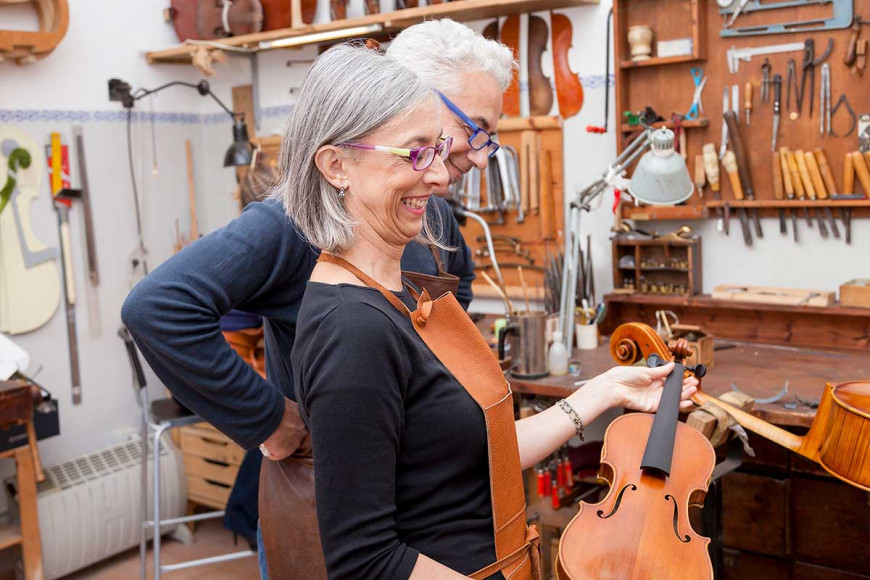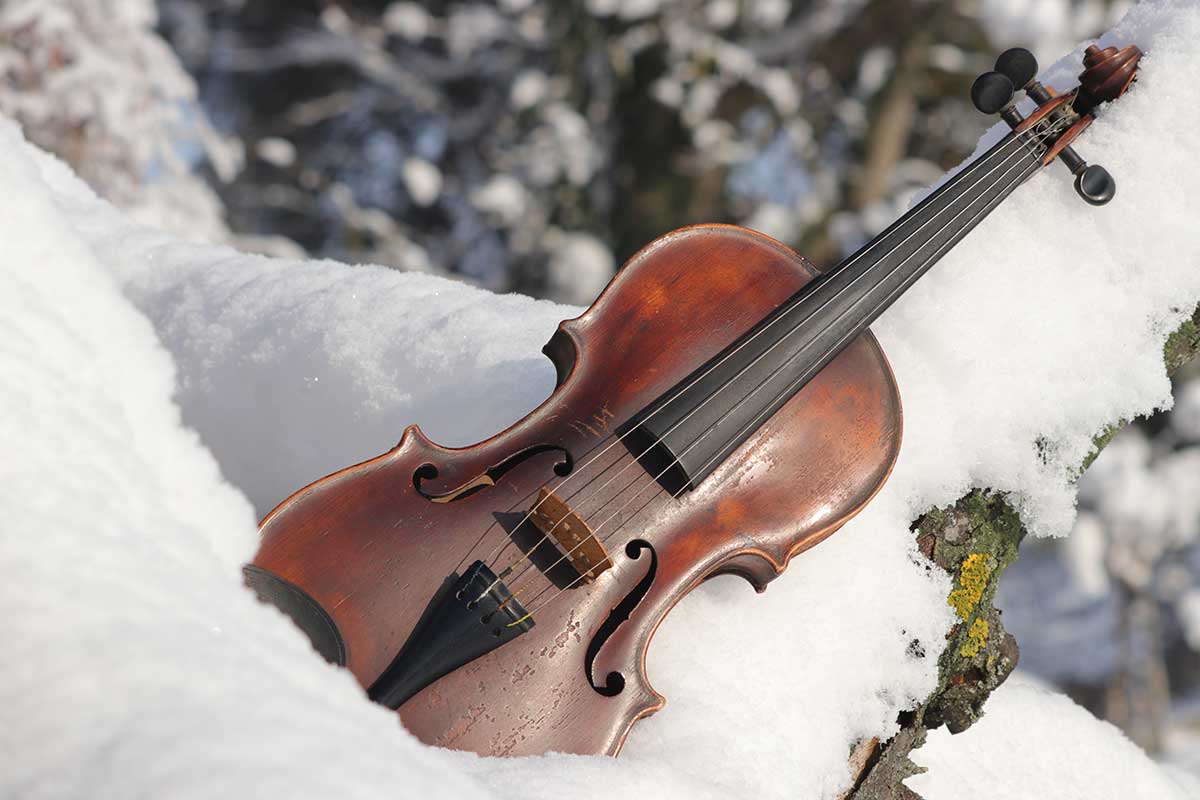Violin Care and Maintenance

Taking care of your violin ensures that you are getting the best possible sound your violin can offer. With a little bit of upkeep and preventative maintenance, you can catch issues before they develop into bigger problems. Follow these guidelines so your violin always sounds its best!
Before you play, wash your hands to keep your strings as clean as possible. The varnish on your violin isn’t fond of oil and dirt either. After you play, loosen your bow. Leaving it tight for long periods of time can overstretch the hair. Wipe the rosin off of your violin and fingerboard. The longer rosin dust is left on, the harder it becomes to clean it off.
Make sure your bridge is straight. The tension of the strings tends to make the bridge lean towards the scroll. If left uncorrected, the bridge will eventually warp. To straighten the bridge, loosen the strings and gently ease the bridge back upright.
Think About Your Climate
Weather plays a huge role in the health of your instrument. High humidity can affect the hair on your bow and make your pegs stick. Store your violin in a room with a dehumidifier if you deal with high humidity.
Low humidity can be just as damaging. Wood shrinks in dry climates causing pegs to slip and cracks to form in the body of the violin. During winter, use a humidifier or humidifier that fits into your violin like a Dampit.
Avoid High Heat
Much of your violin is held together with glue. Leaving your violin in a car or in direct sunlight can make the glue and the varnish melt. Drastic fluctuations in temperature will also make your violin go out of tune.
Changing Your Strings
Getting a fresh set of strings can make your violin sound a hundred times better. You may not even realize how dull your old strings were until you play on a new set. Old strings not only lose their brilliance, they can be difficult to tune. Sometimes they even unravel, develop rough spots, or pop. Always change your string if it develops a rough spot. You want your strings smooth to facilitate easy finger movement. Change your strings at least once a year. If you play several hours a week, you may want to consider changing them more often than that.
Rehairing Your Bow
If you feel like your bow is slipping all over the place no matter how much rosin you apply, it’s probably time to rehair your bow. You can take your bow to a local luthier or string shop. If you don’t have access to a luthier, you can always buy a piece of PVC pipe, package up your bow, and ship it off to be rehaired. It’s commonplace for luthiers to ship bows so you can even drop it off and have them ship it back to you.
When It’s Time to Visit a Luthier
Do you find you are hitting other strings no matter how you bow? Does your left hand hurt from having to use some much pressure to keep the string down? The good news is, it might not be your fault! Improper violin set-up can make playing difficult. If you are getting frustrated with your violin, take it to a luthier. They can make many adjustments to make the violin easier to play. They can also change the strings, install better pegs, rehair the bow, repair chips and cracks, and clean up your violin so it looks brand new!
Always ensure your violin is in tip-top condition. Playing violin is hard enough. Make sure your violin and bow aren’t working against you!
Related:

How to Tune Your Violin
Learn more from the author of this article, popular violin teacher Lora Gallman
Violin Classes and Tutorials




